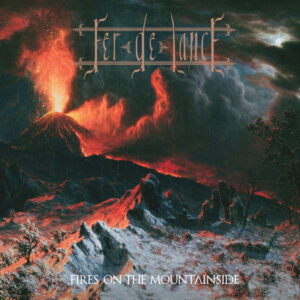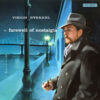Seven Tips to Become a Metal Guitarist
February 24, 2021
If you're reading this, it's probably because you want to learn how to play metal guitar.
Whether it's for fun, jamming with a garage band or you want to go up against Dimebag Darrell or whoever your guitar great is one day, getting good at playing is key.
We'll assume that you already know how to play the guitar ' that you've mastered chord changes, progressions and string skipping. So, let's dive right into the good stuff.
Power Chords
Power chords are what put the 'heavy' in heavy metal. You might think of the opening riff for Iron Man; some say it is the essential root 5 power chord.
Side note: Black Sabbath made the power chord standard in metal music but it's Link Wray, known as the Father of the power chord, who pioneered this technique.
The simplest way to explain power chords: the root note played with the 5[sup]th[/sup] note.
For example, to play a G power chord, the A string is on the 5[sup]th[/sup] fret and the E string is on the 3[sup]rd[/sup] fret. The C power chord is a lot like the G ' D string / 5[sup]th[/sup] fret and A string / 3[sup]rd[/sup] fret.
The E power chord: A string / 2[sup]nd[/sup] fret and E string / open.
When you break power chords down, they're really not that hard. It just takes a lot of practice to get them right and build up the speed to carry anything thrash or death.
Palm Muting
If you've spent any time playing the guitar, you've probably heard of this technique. Maybe you got really good at it while strumming your acoustic; now it's time to transfer that skill to metal music.
For those not familiar with palm muting, let's first explain that the name is misleading. You don't really use your palm to mute your strings! what would that even look like?
Palm muting involves placing the side (or heel) of your hand over your guitar's bridge, lightly touching the strings. You'll notice that, as you play, your sound won't resonate as much. It may even sound a bit flat. But it will be thunderous!
Palm muting is a fundamental technique every metal guitar player must master. You'll hear it in just about every metal song.
Just two things to be aware of as you learn and practice this technique:
1. don't press down too hard on the strings. You'll sound like you're playing out of tune if you do.
2. don't place your 'palm' too far ahead of the bridge. You'll sound like you're either out of tune or completely flat.
Downstroke
Think of your metal heroes: Overkill? Anthrax? Nuclear Assault? Megadeth? Have you noticed anything about how their guitarists play?
If you cut your guitar teeth on an acoustic, you were likely taught to pick strings upward, at least for the most part. And, while slower intros to metal songs allow for upward picking, in the heat of the song, the downstroke is much faster.
The easiest way to get good fast is to set your click track to around 70 bpm (90, if you're already a fairly fast player). Pick a simple riff and have at it!
Even easier: with your click track set to your desired speed, hit one note, then the same note twice, then three and so on until you're downstroke-ing as fast as you can.
For both of these methods, increase your bpm as soon as you're comfortable playing at that speed. Or, for a greater challenge, change notes.
What to watch for: a sore arm, especially the elbow.
New players ' at least, those new to the downstroke tend to tense up and/or exaggerate their stroke. Just play it loose; don't let your hand travel any further than it has to.
Riffing
Riffing is not usually considered a technique beginners should jump right into learning; palm muting and building speed are where beginner metal guitar lessons lie. However, if you have a guitar Superprof who has sensed your talent and says you're ready, who are we to say anything besides 'go for it'?
Riffing all comes down to playing single notes in that space on your fretboard usually reserved for rhythm.
Judas Priest's Breaking the Law has a great riff for you to pick up on if you're just beginning to learn them. Smoke on the Water is another good one to cut your teeth on and, if you like 80s rock, try The Eye of the Tiger riff.
Just beware that, when playing riffs, your hands are going to move! a lot!
Alternate Picking
Once you master those four fundamental metal guitar techniques, you're ready for alternate picking.
Basically, this method involves your hand working double-time. You pick on the downstroke and the upstroke, one note each.
Alternate picking calls for a lot of skill and precision so don't get frustrated if you can't get it on your first few! thousand tries.
And, once you surprise yourself with the sounds you can make, try!
Galloping
We are now sliding into intermediate guitar playing territory. Galloping (also called triplets) involves playing 3 notes ' one down, one up and one down, in rapid succession, over and over.
She Wolf (Megadeth) treats us to a perfect gallop while Aggressor (Death Angel) shows us what high-speed alternate picking sounds like.
Practice
Lots of players get hung up on trying to learn a new skill and forget to practice what they've already mastered.
Practicing regularly and effectively is the best tip.
One day, work on chord progressions and building speed. The next day, focus on palm muting and transitions. The day after that, have some fun riffing. Next session, hit those power chords and work on alternate picking.
You get the drift, right?
While you're at it, don't forget to work your arms and hands daily. Keeping yourself in good shape guarantees that you'll have the strength and speed to play for as long as you'd like without risking injury.
Source:
More results...





















